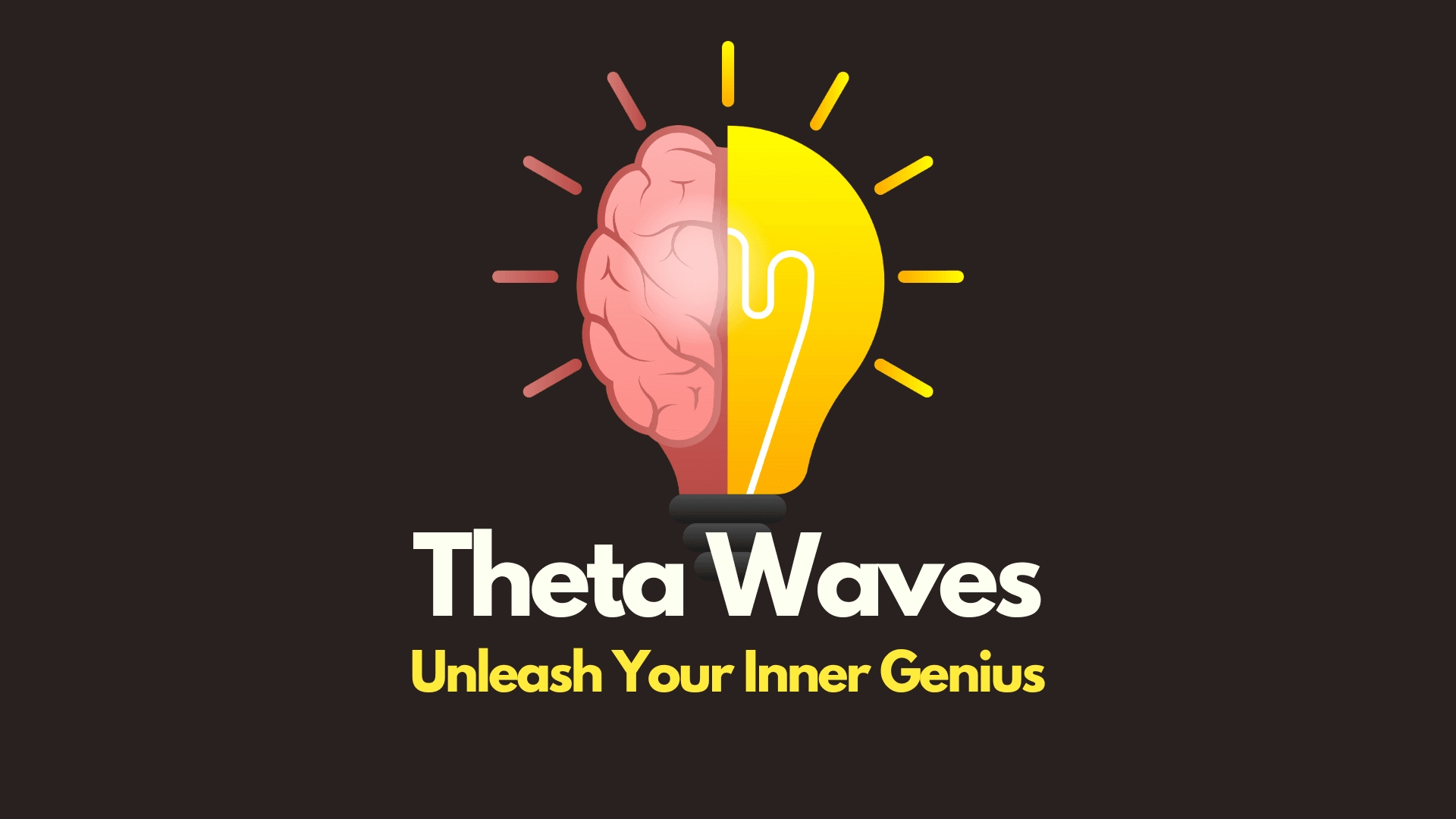Published
- 5 min read
Theta Waves: Unleashing Your Inner Genius

Introduction
What Are Theta Waves and Why Should You Care?
Theta waves are a specific type of brainwave that oscillates between 4 and 8 Hz. They are most commonly associated with states of deep relaxation, meditation, and, most intriguingly, heightened creativity and intuition. But why should you care? Well, imagine having a secret key that could unlock a treasure chest filled with creative ideas and solutions. Theta waves could very well be that key, offering you a pathway to tap into a level of creativity you never knew you had.
The Role of Theta Waves in Creativity and Intuition
Theta waves are like the unsung heroes of your cognitive world. They work behind the scenes, facilitating a unique mental environment where your mind can make unexpected connections, giving birth to innovative ideas and solutions. It’s like having a personal brainstorming session where the sky’s the limit. Intrigued yet? Let’s delve deeper into how this all works.
The Connection Between Theta Waves and Creativity
The Science: What Do Studies Say?
Several scientific studies have explored the relationship between Theta waves and creativity. One groundbreaking study published in the Journal of Neuroscience found that individuals who exhibited higher Theta wave activity were significantly better at problem-solving tasks that required creative thinking. Another study in Nature Communications found that Theta waves are prevalent during REM sleep, a phase of sleep that has been linked to enhanced creativity and problem-solving skills.
Table 1: Key Studies on Theta Waves and Creativity
| Study | Key Findings | Implications |
|---|---|---|
| Journal of Neuroscience | Higher Theta activity correlates with better problem-solving skills. | Theta waves could be trained to improve creative thinking. |
| Nature Communications | Theta waves are prevalent during REM sleep, a phase linked to creativity. | Sleep quality could affect creative performance. |
| Psychological Science | Theta wave biofeedback training improved artistic creativity. | Direct manipulation of Theta activity could enhance creativity. |
Different Types of Creativity and Theta Waves
Theta waves don’t just influence one type of creativity; they can be a catalyst for various forms. Whether it’s artistic creativity, problem-solving, or innovative thinking, Theta waves have a role to play. For example, musicians often report entering a \“flow state\” rich in Theta activity, while engineers solving complex problems also show increased Theta wave patterns.
The Mechanism: How Do Theta Waves Enhance Creativity?
Theta waves are believed to induce a state known as \“transient hypofrontality.\” In simpler terms, this means that the brain’s frontal lobes, which are responsible for logical reasoning and critical analysis, become less active. This allows other parts of the brain, which are more associated with creativity and intuition, to take the lead. It’s like turning off your inner critic to let your inner artist shine.
How to Induce Theta States
Meditation Techniques to Unlock Theta Waves
- Mindfulness Meditation: This involves focusing on your breath and letting go of intrusive thoughts. The idea is to enter a state of pure awareness, which has been shown to increase Theta activity.
- Step-by-Step Guide: Sit in a comfortable position, close your eyes, and focus on your breath. If your mind wanders, gently bring it back to your breath. Aim for at least 10 minutes to start with.
- Transcendental Meditation: Here, you use a specific mantra to enter a state of deep relaxation and heightened awareness, another state rich in Theta waves.
- Step-by-Step Guide: Sit comfortably, close your eyes, and silently repeat a mantra of your choice. The repetition helps you enter a deep state of relaxation. Aim for 20 minutes twice a day.
Environmental Factors That Can Help
- Dim Lighting: Studies have shown that low light levels can induce a relaxed state conducive to Theta wave production.
- Soothing Music: Certain frequencies, especially those around 4-8 Hz, can stimulate Theta wave activity.
Pro Tips: Your Quick Guide to Inducing Theta States
- Find a Quiet Space: Distractions can hinder your ability to enter a Theta state.
- Use Noise-Cancelling Headphones: These can help you focus, especially if you’re listening to Theta-inducing music.
- Experiment with Different Techniques: Not all methods will work for everyone. It’s essential to find what works best for you.
- Common Mistakes and How to Avoid Them: One common mistake is expecting immediate results. Theta states often require practice to achieve.
Real-world Applications
Case Studies: Artists, Writers, and Innovators
- Salvador Dalí: The surrealist painter used a unique \“nap meditation\” technique to enter Theta states, which he claimed were the source of his creative ideas.
- Albert Einstein: The physicist was known to engage in \“thought experiments,\” a form of daydreaming that stimulates Theta activity, to come up with some of his groundbreaking theories.
Practical Applications: How Can You Use This?
Understanding how to harness Theta waves can be a game-changer for anyone in the creative field. Artists can use it to break through creative blocks, writers can use it to find the perfect plot twist, and entrepreneurs can use it to come up with innovative solutions to complex problems.
Tailored Tips for Different Professions
- For Artists: Try using dim lighting and soothing music in your studio to induce Theta states.
- For Writers: Experiment with mindfulness meditation before your writing sessions.
- For Entrepreneurs: Use Transcendental Meditation techniques to clear your mind and improve problem-solving skills.
Conclusion
Summary: The Power of Theta Waves
Theta waves offer a scientifically-backed pathway to enhanced creativity and intuition. By understanding the science behind these brainwaves and learning how to induce Theta states, you can unlock a treasure trove of creative potential that you never knew existed.
Future Implications: What’s Next?
As neuroscience continues to advance, the role of Theta waves in creativity is likely to gain even more attention. Future research may even lead to technologies that can artificially induce these states, opening up exciting possibilities for the world of creativity.